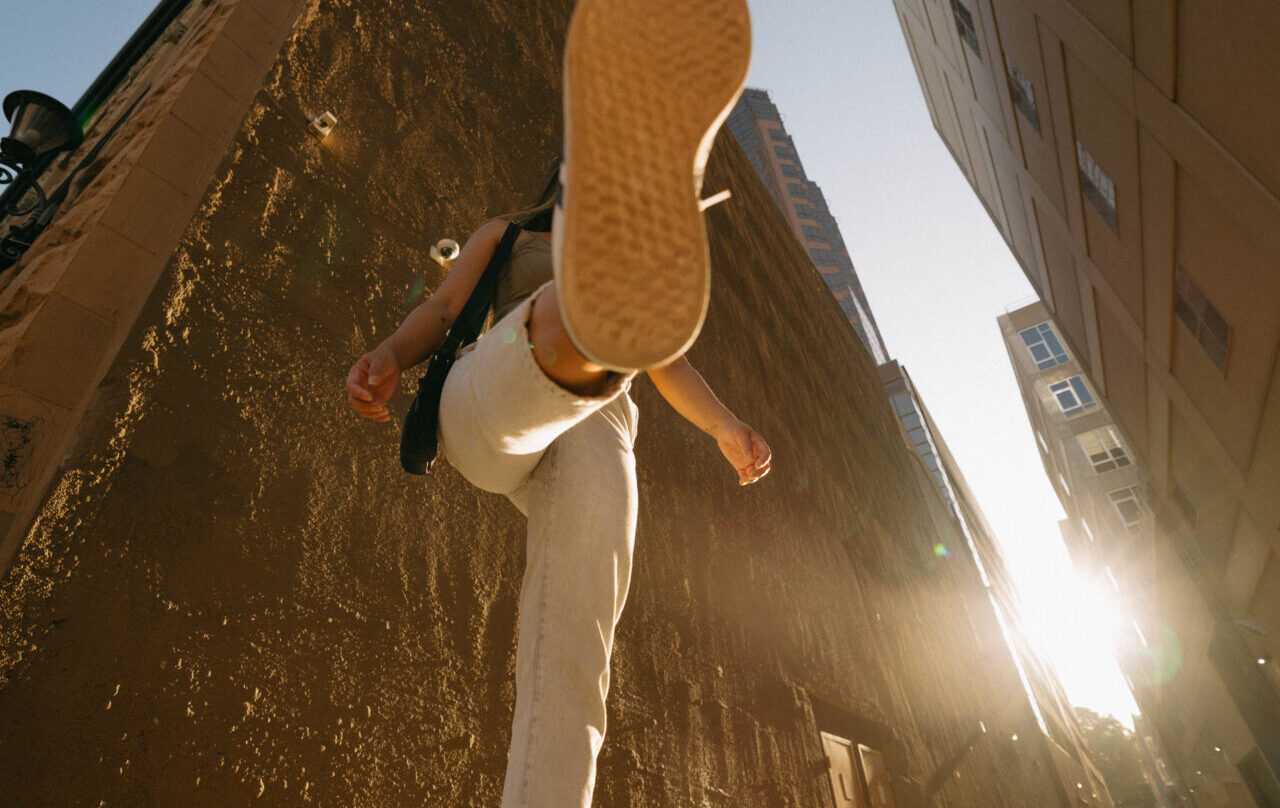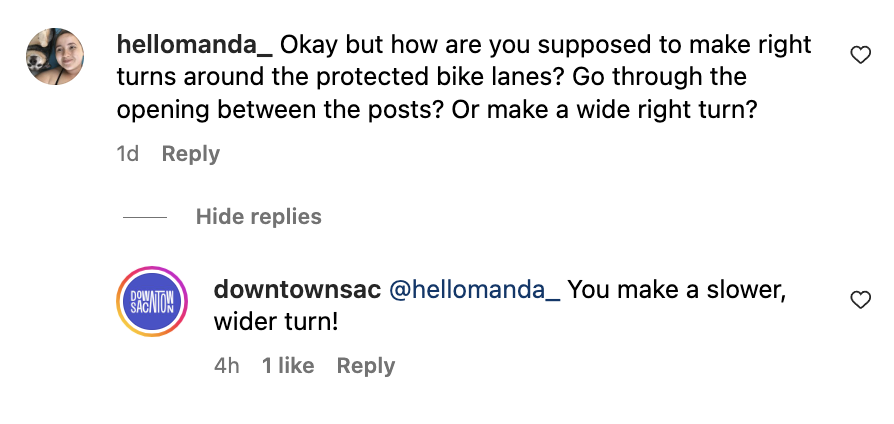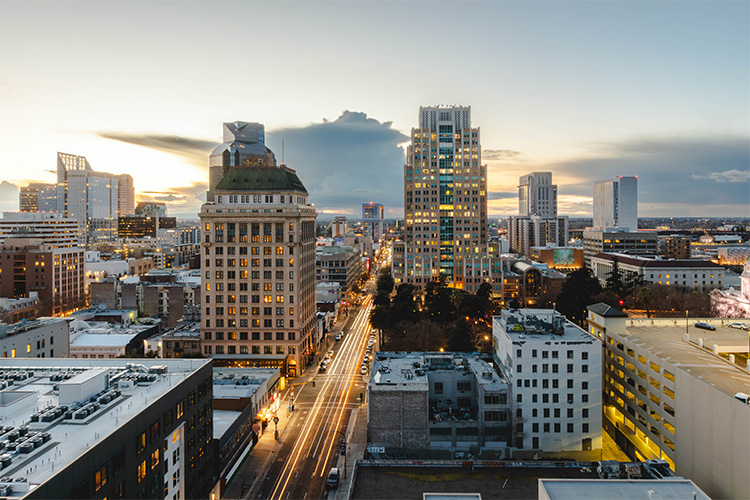Talk of the Town: Central City Mobility Project

We posted a video series of our Deputy Director, Scott Ford, explaining the Downtown Sacramento Livability Strategy he co-authored with Brent Toderian. TL;DR: it’s a strategy to fundamentally change our approach to downtown’s growth by prioritizing the things that any great neighborhood needs.
A key priority in the strategy is creating dynamic and exceptionally walkable streets. Thankfully, the City of Sacramento is already making progress on this with its Central City Mobility Project. It’s also spurred some hot topics on social media.

Whenever we talk about rethinking our streets, the number one sentiment we hear is “what about the parking!?” Which really highlights the entire point of the Livability Strategy. As Scott wrote in the strategy, achieving a walkable downtown of the future will “require a significant mindset shift for many of us who call Sacramento home.”
Meaning, we need to SHIFT OUR CAR-CENTRIC MINDS! Once we deprioritize cars as our main source of travel, these strategy recommendations will make more sense and be easier to implement.
Why do we feel the need to drive everywhere, especially those of us who live on the grid? Of course we need parking to accommodate those who are outside of the public transit zone, but SacRT is incredibly underutilized, along with our growing system of protected bike lanes. (I’m speaking to myself here, too. I’m just as guilty of being a 5-minute driver).
It’s estimated in the U.S. 30% of all areas in a city are dedicated to parking. Successfully-walkable cities that we look to as models, that I hear so often we’re jealous of, have a percentage of parking below 10%. We’re at about 16%, so we’re on our way. The people in walkable/transit-heavy cities operate on a system of allotting themselves more time to get places. That might not sound sexy since RT operates on a 15-minute cycle, which is relatively lengthy. But the route times won’t pick up until there’s more demand. And it looks like we won’t get more demand until we give ourselves a little tough love and incentivize methods of transportation that aren’t cars.
There are also knee-jerk reactions to the posts of our protected bike lanes. They do slow down traffic and they do require you to pay more attention to where you’re going. Again, that’s the point! It wasn’t until I started this line of work that I realized how a lot of us drive like maniacs to, at best, shave two minutes off our drive.

The City of Sacramento is taking steps to declare a state of emergency over pedestrians and cyclists that are being killed by cars on our streets. This reflects a fundamental American characteristic of rushing because we believe our time is so incredibly valuable. Two-way conversions, protected bike lanes, and widened turning angles are designed to shorten the distance people need to cross the street, and increase reaction times for drivers. Speed is the biggest factor in pedestrian death and injury.
Many of the strategy’s recommendations/solutions hinge on the fact that when more people are around, less crime happens. Think about how Davis is known for how many bikers are on the roads, I know that when I’m driving there, I’m more careful when I drive because I know cyclists are everywhere and I don’t want to cause harm.
The change starts with us, by yourself or with a group, save some gas, get the ZipPass App, here’s a link to the bike map – we got this.


